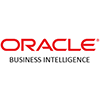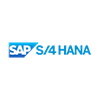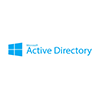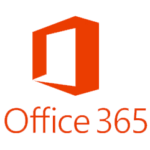How To Bullet-Proof Your Org Against Regulatory Breaches Caused by Deficient Access Management?
Access management is a crucial and foundational element of any organization’s cybersecurity strategy. Access management refers to controlling who has access to sensitive data and systems within an organization. Without proper access management, an organization is at risk of regulatory breaches that could result in hefty fines and damage to its reputation. This article will explain these access issues and why automation and AI is the bullet-proof way to protect against Identity, Governance, and Administration (IGA) regulatory breaches in our current landscape.
Access control ensures that only authorized individuals are allowed access to a particular resource, such as a building, a network, an application or a database. Access control is critical for maintaining security and protecting sensitive information. While effective Access controls are basic requirements for any business, they are also essential for complying with several regulatory requirements across jurisdictions. There are several challenges in consistently maintaining adequate access controls and avoiding breaches of such requirements. We shall explore some leading practices that can offer solutions to overcome this.
At the outset, let us consider the specific regulatory requirements that drive the need for Access controls. The industry and nature of business are critical determinants of these requirements and tend to fall into the following buckets:
Privacy regulations: Organizations that are involved in the collection and processing of personal information, such as names, email addresses, and biometric data, must comply with privacy regulations (e.g., General Data Protection Regulation (GDPR) in the European Union or the Personal Information Protection and Electronic Documents Act (PIPEDA) in Canada). Access controls and management is a crucial capability enabling privacy and data protection compliance.
Industry-specific regulations: Different industries may have dedicated access control regulations. For example, healthcare organizations must comply with the Health Insurance Portability and Accountability Act (HIPAA) in the United States, which sets standards for the privacy and security of patient health information. Another example is Payment Card Industry Data Security Standard (PCI DSS) for organizations that handle credit card data. Public companies in several countries, irrespective of industry, are subject to SOX (or equivalent regulation) compliance which involves internal controls over financial reporting, including access controls over financial data and reporting.
Let’s look into the history of Access control challenges that cause regulatory breaches relative to the above requirements. They tend to fall into one or more of the following causes:
Lack of segregation of duties (SOD), typically developers having access to the production environment. Given the risk of compromising application integrity, auditors and regulators consider this very important. Other instances lack SOD that can lead to fraudulent transactions (e.g., same person can enter a vendor invoice and approve payment against policy).
Lack of management of privileged access Accounts. Given the extensive access privileges associated with these accounts and the potential for deliberate or unintended misuse of privileges to modify data, regulators and auditors are concerned about this. Lack of logging and monitoring further add to the concerns.
Poorly managed source code access is a significant risk factor. Given the potential for use of the wrong version or unauthorized version of source code to make changes and the impact on application integrity makes this a key issue for regulators and auditors.
Termination of user access when they leave the organization or get transferred. Given the potential for misuse of such privileges by insiders, this becomes an issue of focus.
What makes the above typical causes of regulatory breaches and audit issues particularly challenging? A few things come to mind:
Complexity and interoperability: Access control systems can be complex in a large organization. Different systems may not be interoperable, creating challenges in managing and enforcing access control policies across various resources and systems.
User experience: Access control measures, such as multi-factor authentication, can sometimes be perceived as a barrier to productivity and user experience. Organizations must balance the need for security with the need for convenience and usability, and when poor choices are made as a result, compliance may be breached.
A sheer volume of access transactions (provision, change, delete) may challenge organizations with limited resources to cope with it and hence cause breaches or timeliness-driven issues, especially for access revocation.
Lack of clarity of roles and responsibilities when multiple departments and groups are involved in ensuring effective management of Access controls.
So what is the solution? What are leading organizations doing to overcome these challenges and address the underlying issues? Here are some of the latest trends in maintaining effective access controls:
Automation: Automation of every aspect of the access controls management lifecycle (Authentication, Authorization techniques combined with an effective Grant/Modify/Revoke cycle) – more recently enabled by AI and Machine Learning where appropriate – has proven to be the best solution. However, the right choice of Automation and AI solutions that work for the organization and proper implementation and monitoring solution-effectiveness are crucial to success and sustaining the resulting capabilities.
Automation of access lifecycle workflow and Access certification workflows are popular use cases that provide tremendous compliance benefits and better controllability.
Identity and Access Management (IAM) as a Service: In line with the trend of outsourcing non-core activities and dealing with internal capacity constraints, many organizations increasingly consider IAM as a Service capability offered in the market. It is a cloud-based approach to managing access controls that allow organizations to centrally manage user identities and access policies across different systems and applications. This approach can help organizations improve efficiency and reduce the complexity of managing access controls.
Enhancements to Authentication and/or Authorization techniques are becoming popular, including one or more of the following:
Multi-Factor Authentication (MFA): MFA requires Users to provide multiple forms of authentication, such as a password and a biometric factor, before granting access. This approach can help organizations improve their security by reducing the risk of unauthorized access.
Role-based access control (RBAC): RBAC involves assigning permissions to users based on their organizational role. It offers a simple, manageable approach to access management that is less prone to error than assigning permissions to users individually.
Adaptive Access Control: Adaptive access control uses contextual information, such as the user’s location, device, and behavior, to make access decisions. This approach can help organizations improve security by dynamically adjusting access controls based on the risk level of the request.
Continuous Monitoring: Continuous monitoring involves monitoring access attempts and activities in real-time to detect potential security incidents. This approach can help organizations quickly identify and respond to security incidents, reducing the potential impact of a breach.
Zero Trust Architecture: Zero Trust Architecture (ZTA) is an approach to access control that assumes that all access requests are potentially malicious and therefore requires verification of each request before granting access. This approach can help organizations improve their security posture by reducing the risk of unauthorized access.
Overall, these trends focus on improving access controls’ effectiveness by using advanced technologies and approaches to manage identities, monitor access, and reduce the risk of unauthorized access and access-related audit and regulatory issues.













